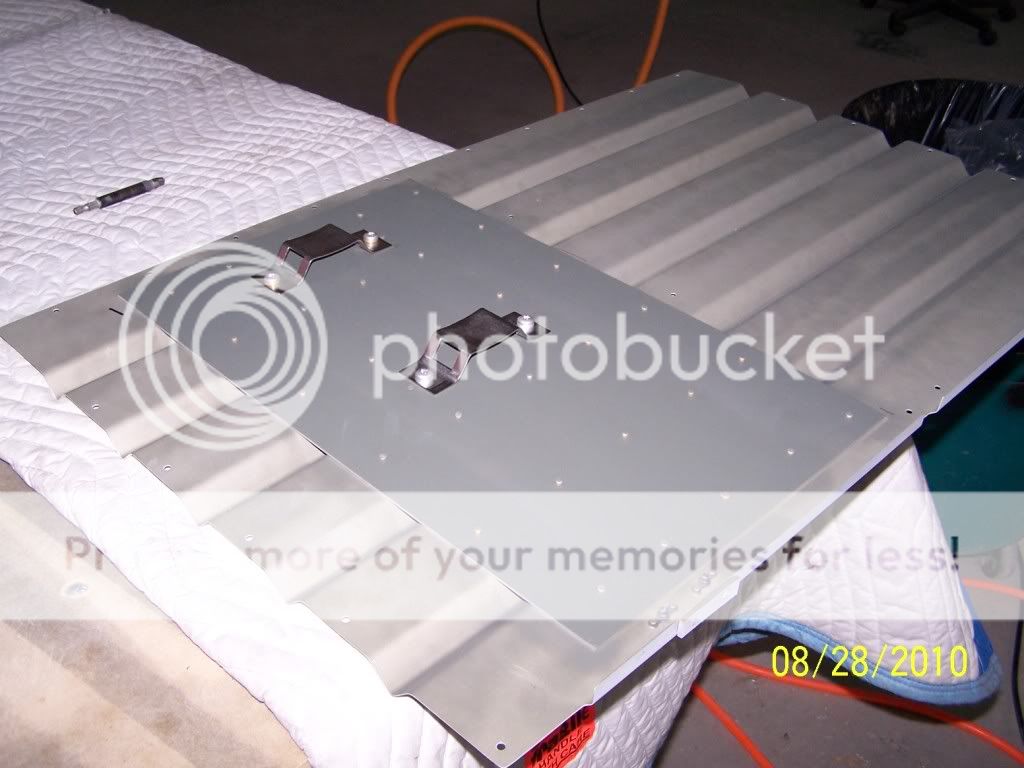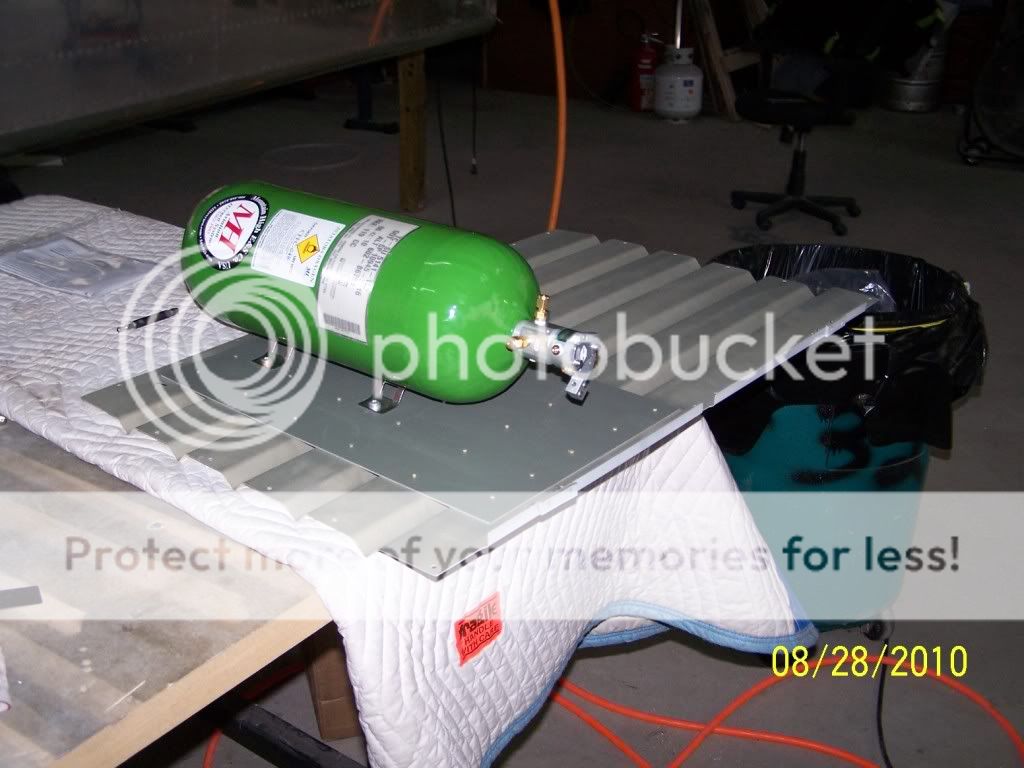From my research, it seems that behind the baggage bulkhead is a typical place to mount the oxygen bottle. I have a few questions for the group.
1-How close is too close to the battery? I've seen plenty that are within a foot, but if done this way, will likely only be 2 inches
2-Will the skin support a 7 pound oxygen bottle? In the pictures below, the paper is representing a 2" by 4" doubler of .032.
3-I made up the c-channel from two angles for the mock-up, but will buy actual c-channel for the final mounting.
4-My plan B is to move the oxygen the next bay aft. 7 pounds that far back might start to make a difference...probably okay.
Thanks for the input and thoughts.
-Jim
P.S. Just noticed this may interfere with the auto-pilot pitch servo...may have to go to plan b or c...


1-How close is too close to the battery? I've seen plenty that are within a foot, but if done this way, will likely only be 2 inches
2-Will the skin support a 7 pound oxygen bottle? In the pictures below, the paper is representing a 2" by 4" doubler of .032.
3-I made up the c-channel from two angles for the mock-up, but will buy actual c-channel for the final mounting.
4-My plan B is to move the oxygen the next bay aft. 7 pounds that far back might start to make a difference...probably okay.
Thanks for the input and thoughts.
-Jim
P.S. Just noticed this may interfere with the auto-pilot pitch servo...may have to go to plan b or c...















